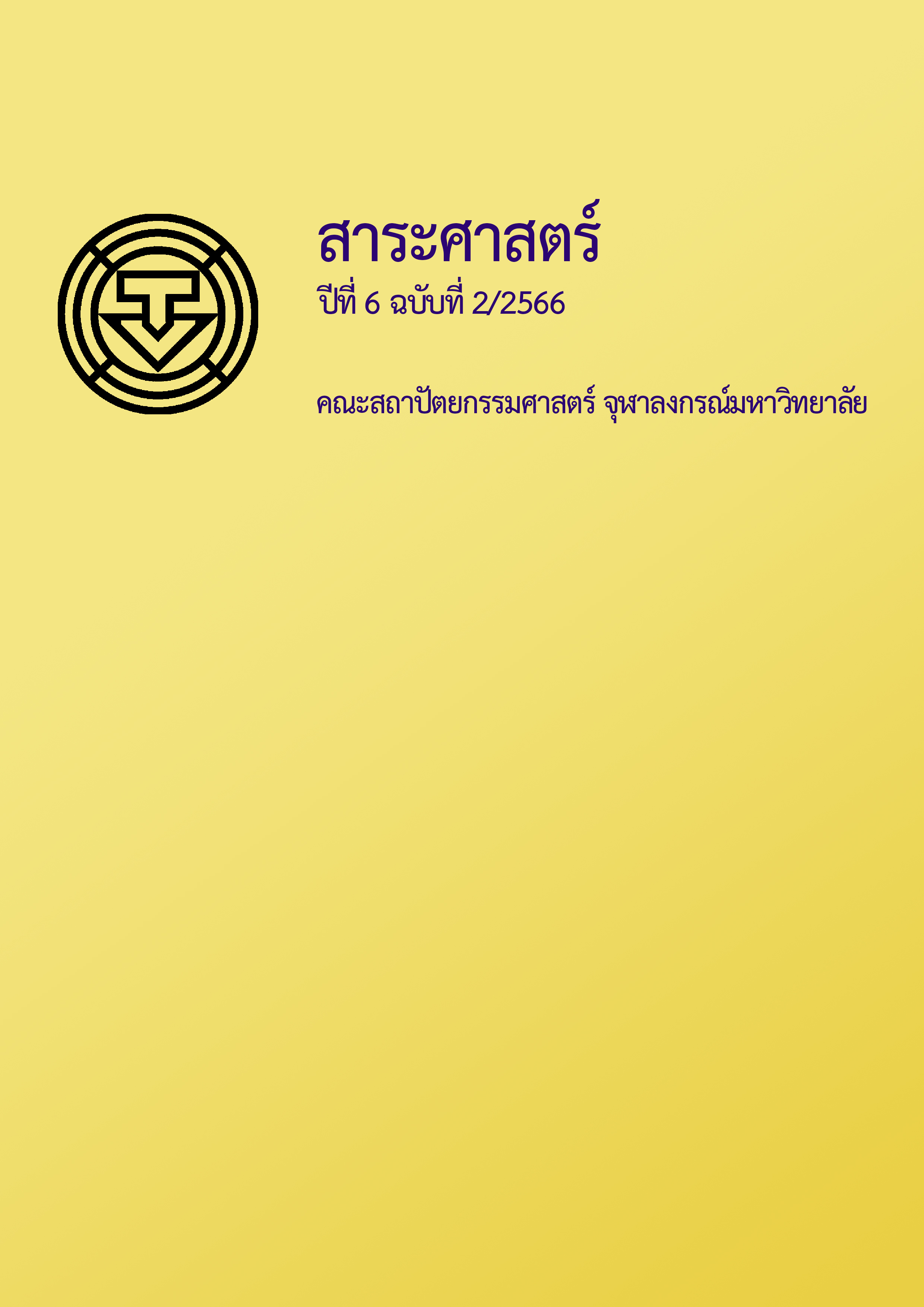Study of Green Area Regulation in Environmental Impact Assessment: A Case Study of Condominiums in Bangkok
Main Article Content
Abstract
Residential condominium buildings with a minimum of 80 rooms or a floor area of at least 4,000 square meters require an environmental impact assessment report (EIA). One regulation in the environmental impact assessment report (EIA) is green area, which serves as an indicator of the livability of a city. However, over the past 30 years since the enactment of the National Environmental Quality Promotion and Preservation assessment in 1992, the measurement of green area usage has not been updated to authorize with the current situation. This research aims to study the improvement and development of green space criteria along with exploring the possibilities of enhancing those regulations. The study framework divides into two sections, 1) studying the characteristics of green spaces mentioned in the regulation of the environmental impact assessment report (EIA) evaluated in 2018, and 2) identifying possibilities for improving and developing the aforementioned criteria.
The study findings can be categorized into two aspects. First, a critical analysis of the previous literature revealed that the green spaces in the environmental impact assessment reports met minimum green space criteria. This research found that low-rise buildings had a higher average proportion of all types of green spaces compared to high-rise buildings. The outcome from interviews with the group of EIA manipulators indicated that the most important factors in creating green spaces were the minimum criteria numbers and the species of trees used for carbon absorption calculations. The tree species used were based on a reference table established in 1999, without additional tree species and not reflect the current practicality. Second, The in-depth interviews with expertise led to proposed guidelines for improving green area regulation, including: 1) maintaining the minimum criteria but updating them to be more practical and relevant, together with accepting different forms of the green area separate from the main criteria which could be irreplaceable, and 2) establishing actual objectives of the criteria for implementations and utilization, with the consideration of expertise’s knowledge about green area regulation, and incorporating with other relevant environmental criteria to create new approaches for the future.
Article Details
References
กรุงเทพธุรกิจ. (2560). คอนโดกรุงเทพเปิดตัวสูงสุดในรอบ 10 ปี. https://www.bangkokbiznews.com/business/786057
พูนพิภพ เกษมทรัพย์. (2542). ต้นไม้กับปัญหามลพิษทางอากาศ. ใน วันต้นไม้ประจำปีแห่งชาติ ปี 2542 (หน้า 91-106). กองสวนสาธารณะ สำนักสวัสดิการสังคมกรุงเทพมหานคร.
สถาบันอาคารเขียวไทย. (2555). เกณฑ์การประเมินความยั่งยืนทางพลังงานและสิ่งแวดล้อมไทย สำหรับการก่อสร้างและ ปรับปรุงโครงการใหม่. https://tgbi.or.th/uploads/trees/2012-09-26-%E0%B9%80%E0%B8%81%E0B8%93%E0%B8%91%E0%B9%8C-TREES-NC.pdf
สถาบันอาคารเขียวไทย. (2565). The SOOK building standard มาตรฐานอาคารเป็นสุข. https://tgbi.or.th/wp- content/uploads/2021/09/3.-SOOK-Standard-for-Publish-TGBI-07-9-21-Linked.pdf
สำนักนโยบายและแผนทรัพยากรธรรมชาติและสิ่งแวดล้อม. (2560). แนวทางการจัดทำรายงานผลกระทบสิ่งแวดล้อมของโครงการประเภทอาคาร การจัดสรรที่ดินและบริการชุมชน. สำนัก.
U.S. Green Building Council. (2014). SITES v2 rating system for sustainable land design and development. https://www.usgbc.org/resources/sites-rating-system-and-scorecard


